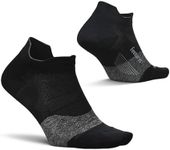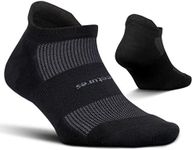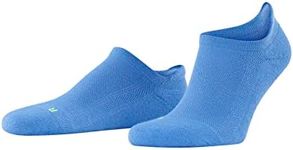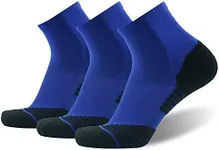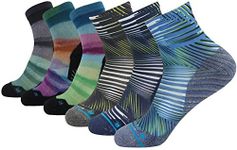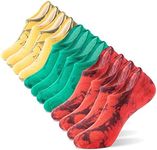Buying Guide for the Best Longest Lasting Socks
When it comes to buying the longest-lasting socks, it's important to consider several key factors that contribute to their durability and comfort. Socks are an essential part of our daily wardrobe, and choosing the right pair can make a significant difference in terms of longevity and overall satisfaction. Here are the key specifications to look for when selecting the best socks for long-lasting wear.MaterialThe material of the socks is crucial because it determines their durability, comfort, and breathability. Common materials include cotton, wool, polyester, and blends. Cotton is soft and breathable but may wear out faster. Wool is warm and durable but can be itchy for some people. Polyester and synthetic blends are often more durable and moisture-wicking. For the longest-lasting socks, look for a blend that includes synthetic fibers like nylon or polyester, which add strength and durability to the fabric.
Reinforced AreasReinforced areas, such as the heel and toe, are important because these parts of the sock experience the most wear and tear. Reinforcements in these areas can significantly extend the life of the socks. When shopping, check if the socks have extra padding or thicker fabric in the heel and toe regions. This feature is particularly useful for people who are on their feet a lot or engage in activities that put extra stress on their socks.
Seam QualityThe quality of the seams in socks can affect both comfort and durability. Poorly made seams can cause discomfort and are more likely to come apart over time. Look for socks with flat or smooth seams, as these are less likely to cause irritation and are generally more durable. Seamless toe designs are also a good option for added comfort and longevity.
ElasticityElasticity refers to how well the socks can stretch and return to their original shape. Good elasticity ensures that the socks stay up and fit snugly without becoming loose or saggy over time. Socks with high-quality elastic materials, such as spandex or elastane, will maintain their shape and fit better over the long term. Consider your activity level and choose socks with the right amount of stretch to match your needs.
Moisture-Wicking PropertiesMoisture-wicking properties are important for keeping your feet dry and comfortable, especially if you are active or prone to sweating. Socks that wick moisture away from the skin can help prevent blisters and reduce odor. Look for socks made with materials that have moisture-wicking capabilities, such as merino wool or synthetic blends. This feature is particularly beneficial for athletes or anyone who spends a lot of time on their feet.
Fit and SizeThe fit and size of the socks are essential for comfort and durability. Socks that are too tight can cause discomfort and restrict circulation, while socks that are too loose can bunch up and cause blisters. Make sure to choose the right size based on your shoe size and consider any specific fit preferences you have, such as compression or extra cushioning. A good fit will ensure that the socks stay in place and wear evenly over time.



